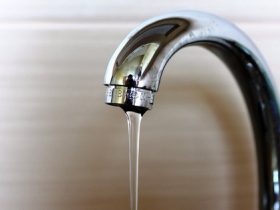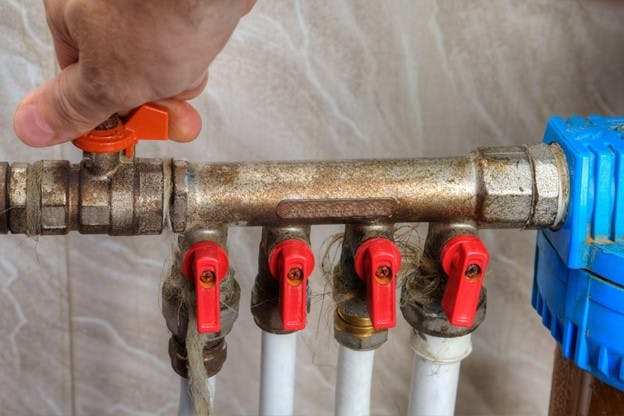Speedy Solutions for Addressing Low Water Pressure in Your Home
Speedy Solutions for Addressing Low Water Pressure in Your Home
Blog Article
Do you find yourself interested in critical info about Dealing with Low Water Pressure in Your Home?

Low tide pressure in your home can be an aggravating trouble, impacting every little thing from bathing to washing meals. If you're experiencing weak water circulation, there are a number of feasible causes and options to explore. In this overview, we'll review usual factors for low water pressure and functional steps to attend to the issue efficiently.
Introduction to Low Tide Stress
Low tide stress happens when the circulation of water from your faucets, showers, and other fixtures is weaker than normal. This can make daily jobs much more challenging and less efficient. Comprehending the reasons for low water stress is important to discovering the ideal solution.
Common Causes of Low Tide Stress
Faulty Stress Regulators
Stress regulatory authorities are in charge of maintaining regular water stress in your house. If they malfunction, it can lead to low tide stress or uneven flow throughout your house.
Community Water System Issues
In some cases, the problem lies outside your home. Metropolitan water system issues, such as main line leakages or upkeep job, can temporarily decrease water pressure in your area.
Pipeline Obstructions
In time, pipes can come to be clogged with mineral deposits, debris, or particles, limiting the circulation of water. This is a common issue in older homes with galvanized steel pipes.
Corrosion
Corrosion within pipes can bring about leakages and reduced water stress. Corrosion buildup can tighten water flow, especially in maturing plumbing systems.
Exactly How to Detect Low Tide Stress
Checking Pipes
Evaluate noticeable pipes for indications of leakages, deterioration, or obstructions. Take note of any kind of unusual audios, such as banging or rattling pipes, which could suggest concerns within the plumbing system.
Consulting with a Plumber
If you're not able to determine the cause of low water stress, take into consideration working with a professional plumber to carry out a comprehensive examination. They can identify underlying concerns and suggest proper options.
Inspecting Taps and Fixtures
Start by checking the water stress at different faucets and components throughout your home. If the concern is separated to details locations, it might show local problems.
Do It Yourself Solutions to Take Care Of Low Water Stress
Flushing Hot Water Heater
Debris buildup in the hot water heater can restrict flow and decrease efficiency. Flushing the storage tank occasionally helps eliminate debris and keep ideal efficiency.
Checking Stress Regulator
Guarantee that the stress regulator is functioning appropriately. Readjusting or replacing the regulator can assist recover proper water stress throughout your home.
Cleaning Aerators and Showerheads
Mineral deposits can accumulate in aerators and showerheads, lowering water flow. Eliminate and cleanse these elements frequently to boost water pressure.
Clearing Up Clogs in Pipes
For minor obstructions, try making use of a plumbing snake or chemical drainpipe cleaner to clear obstructions in pipes. Beware when using chemicals and comply with safety guidelines.
When to Call an Expert Plumber
If do it yourself initiatives fail to fix the concern or if you think substantial plumbing problems, it's best to look for support from a qualified plumber. They have the competence and tools to deal with complicated issues securely and effectively.
Safety Nets to Preserve Water Pressure
Mounting a Pressure Booster
Think about installing a stress booster pump to improve water stress in areas with constantly low flow. This can be especially useful for multi-story homes or buildings with high-demand fixtures.
Tracking Water Use
Bear in mind water usage routines and stay clear of overtaxing the plumbing system. Easy adjustments, such as shocking showers and washing loads, can aid maintain adequate water pressure.
Regular Maintenance
Set up routine maintenance for your plumbing system to avoid concerns such as corrosion, leakages, and blockages. Addressing small troubles early can aid stay clear of more significant repair work later on.
Verdict
Dealing with low water pressure can be frustrating, however identifying the underlying causes and applying ideal services can bring back optimal flow throughout your home. Whether it's cleaning up aerators, checking pipelines, or speaking with a plumber, taking aggressive actions can make certain a consistent supply of water for your everyday needs.
How to Fix Low Water Pressure
Have you noticed the water pressure in your shower or taps seem a little weak? If so, the water pressure in your home may be lower than it should be.
Low water pressure can affect many areas of your home. You might notice it taking longer to fill the bathtub or washing machine or that you’re not getting the pressure you need from your garden hose.
These pressure changes can be sudden or may happen over time. It may take a little investigating to find the cause, but there’s usually an easy solution.
Testing Water Pressure in Your Home
One easy way to check water pressure at home is with a water pressure gauge. You can find one online or at a hardware or home improvement store.
Before you check the pressure, make sure the taps and appliances that use water are turned off. Then, connect the gauge to the exterior hose bib or tap.
Turn the tap up all the way and read the gauge to see the water pressure. If you don’t have an exterior tap, you can disconnect the hose of your washing machine and connect the water pressure gauge to it.
Make sure all your water-using appliances are turned off. Turn the faucet on high to read your home’s pressure or PSI.
If the idea of checking water pressure or dealing with plumbing issues on your own seems a bit daunting, you can call a professional plumbing service to handle the job.
They can help you find the root of your water pressure issues and determine the best solution to the problem.
Clear the Clogs
A clogged pipe is one of the most common issues that leads to low or no water pressure. Pipes can become clogged due to a buildup of mineral deposits.
This is especially true if you have hard water where you live. Even a small clog can reduce the pressure of water running through the pipes.
Clogs usually build up over time. People notice when it affects their showers or the appliances that use water every day.
There are products and tools for clearing clogs on your own or you can call a plumber. They have the expertise and the right tools to locate clogs and determine whether it’s better to repair or replace the pipe.
Clean or Replace Corroded Pipes
Do you live in an older home where the plumbing is decades old? If so, your pipes are probably prone to corrosion. This is especially true if the pipes are galvanised steel.
This material is likely to corrode after 20 years of use. Brass pipes average 40 to 70 years before corroding, while copper pipes are good for 50 years or more.
If you installed extra plumbing fixtures after building or moving into your home, there’s a good chance you could have corroded pipes. The more plumbing fixtures in the home, the harder your pipes have to work, and the more likely they will corrode.
It’s important to address pipe corrosion. Failing to fix the problem can lead to cracked pipes, major leaks, and water damage in your home.
Swapping out old plumbing pipes reduces the risk of corrosives. Updated plumbing produces cleaner and better-tasting water, too.
Seal the Leaks
Another cause of low water pressure could be a leak in the pipes or in the water line. Small cracks or holes leak water into unintended areas before the water can reach the various taps in your home.
If your basement or foundation has flooded, it’s a strong sign of leaking pipes. You can look for leaks by turning off the taps for a couple of hours. Then, check the water metre reading.
An increase may indicate a leak. To see or access the plumbing, check for wet spots or pooling water. If you find a leaking pipe, there could be more.
You may not be able to reach these spots on your own, so it’s a good idea to enlist the help of a professional plumber at this point. They can check all your pipes for leaks and repair or replace damaged ones to restore adequate water pressure.
It’s important to address water leaks right away. Standing water can lead to mould or mildew growing in your home.
Replace the Pressure Regulator
Do you have a pressure regulator in your house? It’s a valve that helps keep the water pressure entering your home at safe levels. A functioning regulator keeps the pressure constant and flowing at around 50 PSI.
High water pressure may damage your plumbing and lead to excess stress on your appliances that use water. When a pressure regulator fails, it can lead to an increase or decrease in pressure.
Sediment or debris in the value can cause a blockage. You can check the pressure regulator by attaching the pressure gauge to an outdoor spigot. If the pressure reads lower than the valve reported, the regulator may be faulty.
A plumbing expert can assess whether the pressure regulator is working for your home. It’s important to replace a failed regulator.
Instal a Booster Pump
Sometimes you may look everywhere to discover the cause of low water pressure but not find an answer. Talk to your neighbours to see if they’re having similar issues.
If other homeowners near you are experiencing water pressure problems, installing a booster pump may be a good solution. It can increase water pressure to the main supply line that runs to your home’s system.
An experienced pro in UK plumbing issues can help you install a booster and restore the water pressure to your house.
How to Fix Low Water Pressure
If you notice the water pressure in your home is less than what it should be, there are a variety of possible problems and solutions. If you’re not a plumbing expert or don’t have the time to spare for DIY plumbing issues, call the pros instead.
At PM247, we know how to improve low water pressure in your home. Simply tell us the plumbing issue you’re having and we will take it from there.
For over 20 years, we’ve provided professional plumbing, drainage, roofing, heating, and electrical services to our customers. We would love to help you, too!
https://www.pm247.co.uk/blog/how-improve-low-water-pressure/

I found that review about 4 Ways to Troubleshoot Low Water Pressure while scouting around the web. For those who enjoyed reading our blog post kindly be sure to pass it around. Thank you so much for your time spent reading it.
Or Book Technician Here Report this page